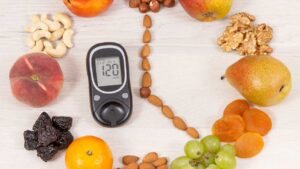Your body is without doubt the most complex machine you will ever be associated with. One aspect of that complexity is that it is not just one machine, it is three:
- an information machine, the world’s most sophisticated computer
- a biochemical machine, whose parts are molecules and whose operation consists of the interactions of molecules in countless different ways, and
- a mechanical machine, muscles and bones that make it possible for you to move, circulate your blood, inflate your lungs, move food from your mouth to your stomach, and so on.
What’s more, these three machines operate quite interdependently, the action within each influencing actions within the others. Complex, indeed.
Faced with such complexity and given the urge to better understand it, there are fundamentally two routes to take:
- “Zoom in” to study and understand each specific cause-and-effect relationship in the machines
- “Zoom out” and study the big parts of the machines, their functions, and how they interact
These strategies are not competitive but rather complementary—the details of cause-effect relationships inform the big picture, while the big picture puts those details into contexts that make it possible to evaluate them.
Still, figuring out all of that sounds like a lot of work, and you can be forgiven for thinking that if it requires 10 years of your time to understand enough about your body to extend its useful operation by 10 years, it’s perhaps not worth it.
Fortunately, it doesn’t require ten years. In fact, there are just a handful of fundamental concepts that lie at the core of all three machines, of every specific cause-effect relationship, and of all the functions and interactions of all the big parts. And it is quite within your reach to considerably increase your understanding of these concepts without “zooming in” to all of the fine details of biochemical, nervous, and mechanical interactions, and to apply your increased understanding towards maintaining and improving your health.
Different authors and experts might have their own lists of these fundamental concepts and names for them. We propose these:
- The procurement of energy and conversion of it into forms that the body can store or use to drive chemical reactions and muscle action (Energy Management)
- The collection of chemical reactions that keep our cells alive (Metabolism)
- The maintenance of stable conditions in which our cells, tissues and organs can function, such as temperature and blood levels of calcium, salt, glucose, fat, and protein. (Homeostasis)
- The elimination of waste and toxins, replacement of dead or dying cells and reproduction of organisms (Renewal)
- Monitoring all of the above and exerting control via nerves and hormones (Regulation).
These concepts are not independent; they have considerable overlap. You might imagine their relationship something like this:

Reducing the complexity of the human body to the relative simplicity of these five concepts can help you get your head around the subject, but don’t be too relieved—these are still only relatively simple. It’ll take some time and work to learn what you need to know. But with this approach, every hour invested can give you a return of years of a healthier, more active and longer life. Which is to say that in about as much time as it took you to learn to drive your car, you can learn how to operate your body towards the objective of long-term good health and activity. Isn’t that worth it?





